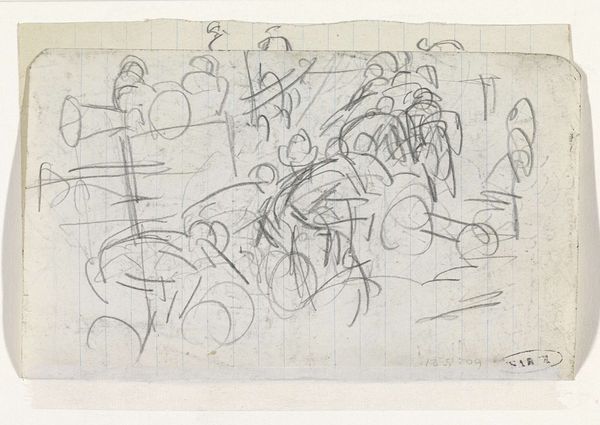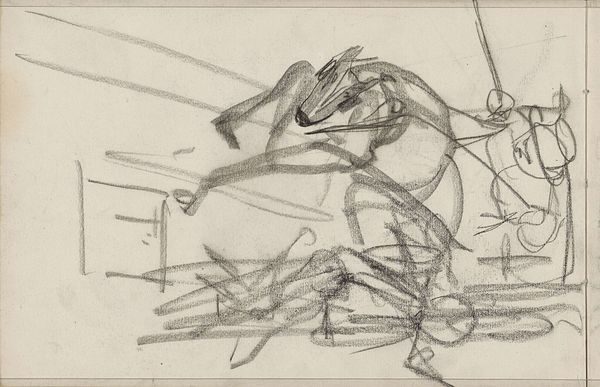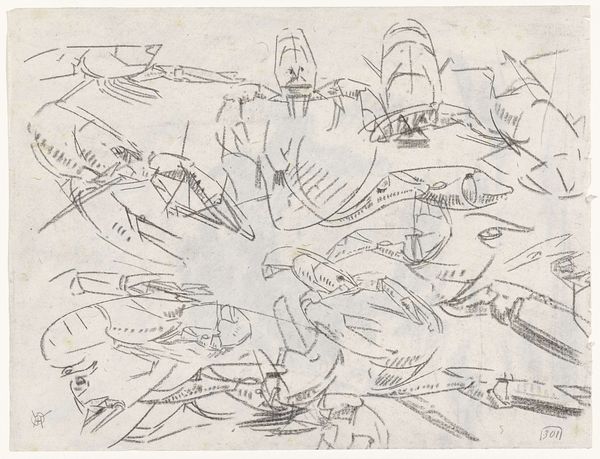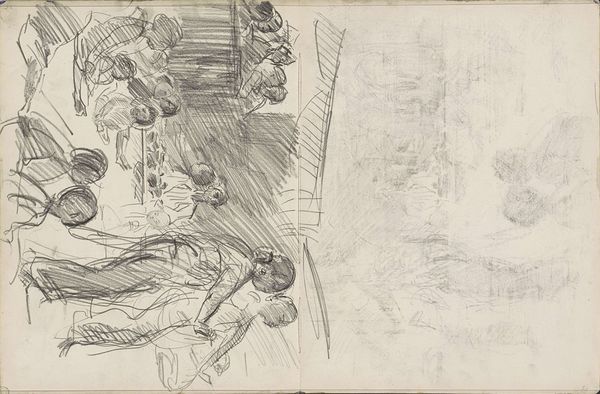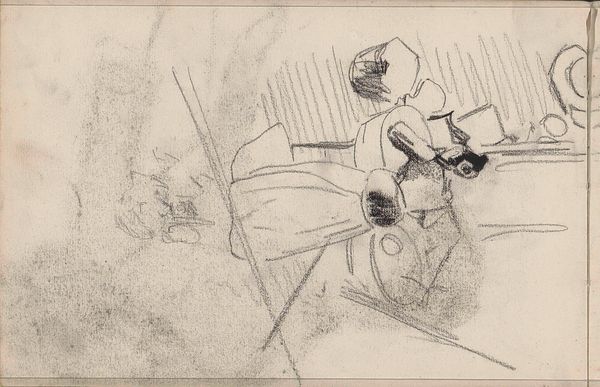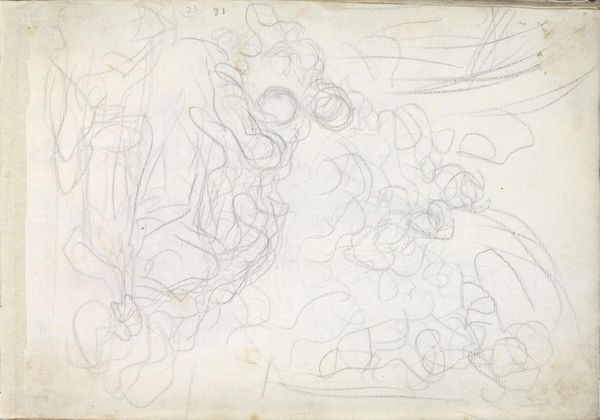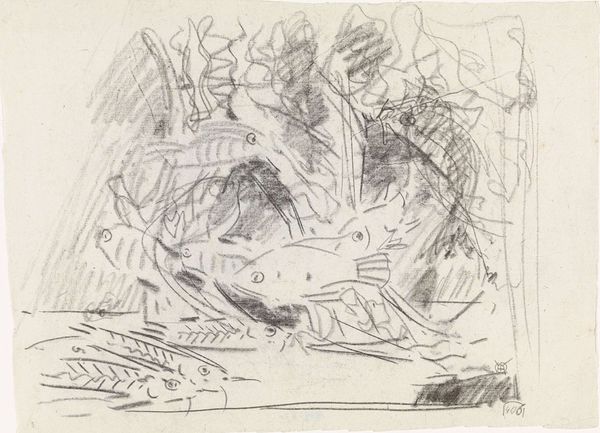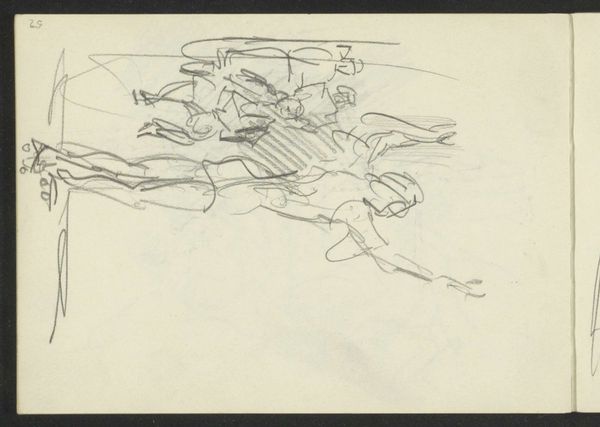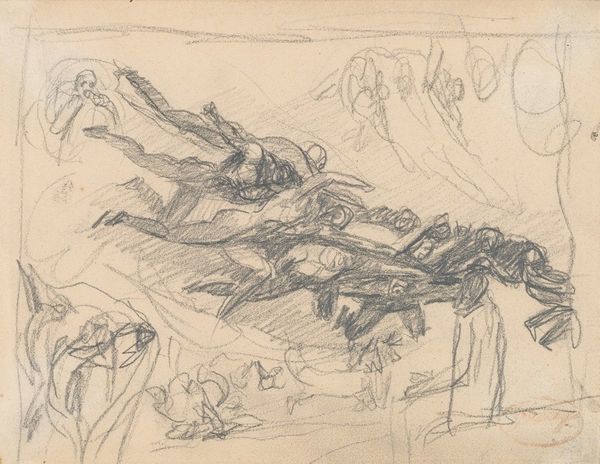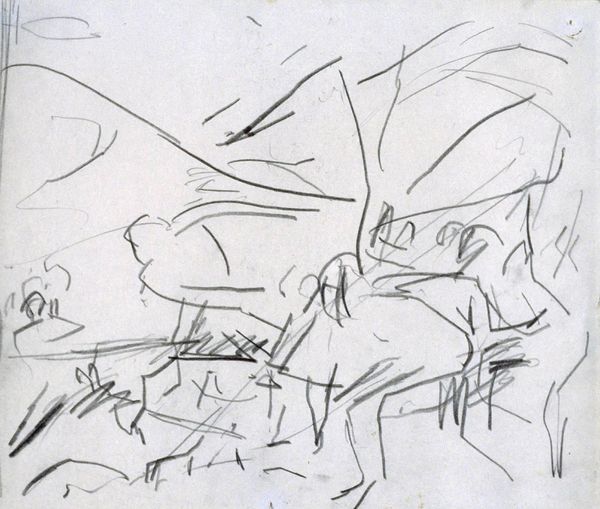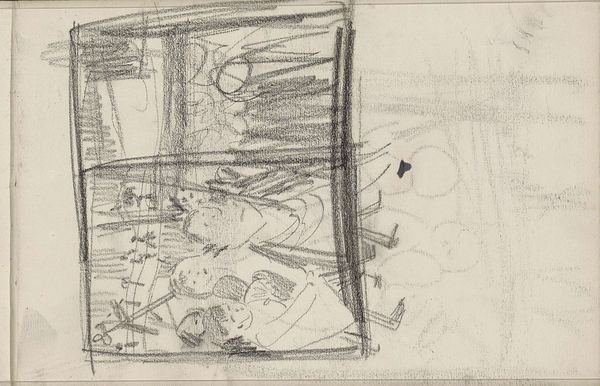
drawing, ink, pen
#
drawing
#
ink drawing
#
pen sketch
#
figuration
#
ink
#
pen-ink sketch
#
line
#
pen
Dimensions: height 218 mm, width 300 mm
Copyright: Rijks Museum: Open Domain
Editor: Here we have "Kreeften," or "Lobsters," by Gerrit Willem Dijsselhof, made sometime between 1876 and 1924. It’s a pen and ink drawing. It feels quite chaotic, almost a frenzy of lines depicting the lobsters. What strikes you when you look at this piece? Curator: Immediately, the interplay of line becomes apparent. The artist uses line not just to delineate form, but also to suggest movement and energy. Note how the varying thickness and density of the lines create a sense of depth and weight, even in this relatively sparse composition. How do you feel the artist's choices in applying the ink impacts the overall work? Editor: Well, it seems the sketch-like quality adds to that sense of frantic movement, like a quick study capturing a fleeting moment. It almost feels unfinished, which paradoxically makes it more dynamic. Do you see any particular structure to the chaos? Curator: The structural integrity rests not on precise representational accuracy, but rather on a delicate balance of forms. Consider the negative space, it is not merely empty, but actively shapes the perceived forms of the crustaceans, thereby influencing how we apprehend each creature. There's a compositional rhythm generated by the clustering and dispersal of the lines. Notice too how certain lines are reinforced to create emphasis, directing our eye across the surface. Editor: So, it’s not about perfect realism, but more about the energy and interaction of shapes and lines creating a visual experience. I hadn’t considered the negative space acting as a compositional tool itself. Curator: Precisely. The material qualities of ink, combined with line, produce an experience that transcends simple depiction and delves into the abstract qualities of form. The structure relies on the dynamic tensions between these formal elements. Editor: I will definitely look at drawings differently from now on! Curator: Indeed, approaching art with an eye toward its inherent qualities is enlightening.
Comments
No comments
Be the first to comment and join the conversation on the ultimate creative platform.

